
DAPPAGANTENGIDAMAN99JR
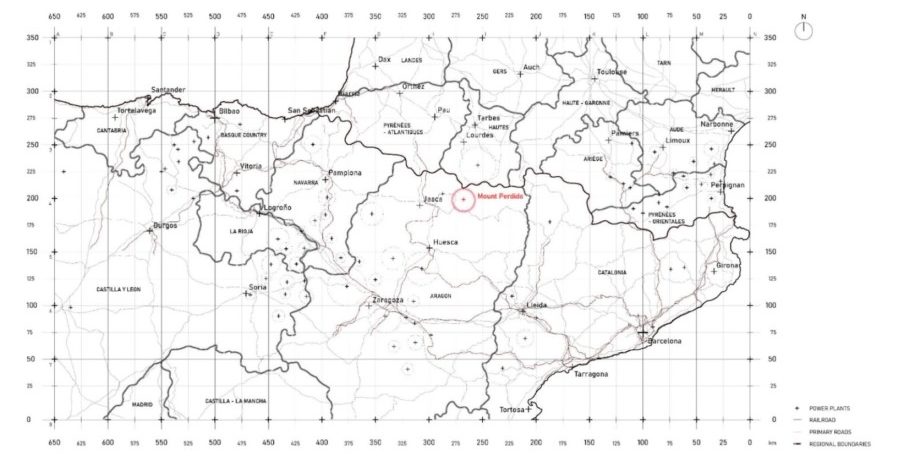
This scenario occurs in our site, Monte Perdido, one of the peaks in the Pyrenees mountain range of Northern Spain.
If there is no snow accumulation though the summer months, the lower temperatures that range between 9 to -2 degrees celsius are still cold enough to preserve patches of snow within the mountain ranges. This is especially prevalent in situations where the mountain shades some portions of snow from direct solar radiation.

If there is no snow accumulation though the summer months, the lower temperatures that range between 9 to -2 degrees celsius are still cold enough to preserve patches of snow within the mountain ranges. This is especially prevalent in situations where the mountain shades some portions of snow from direct solar radiation.
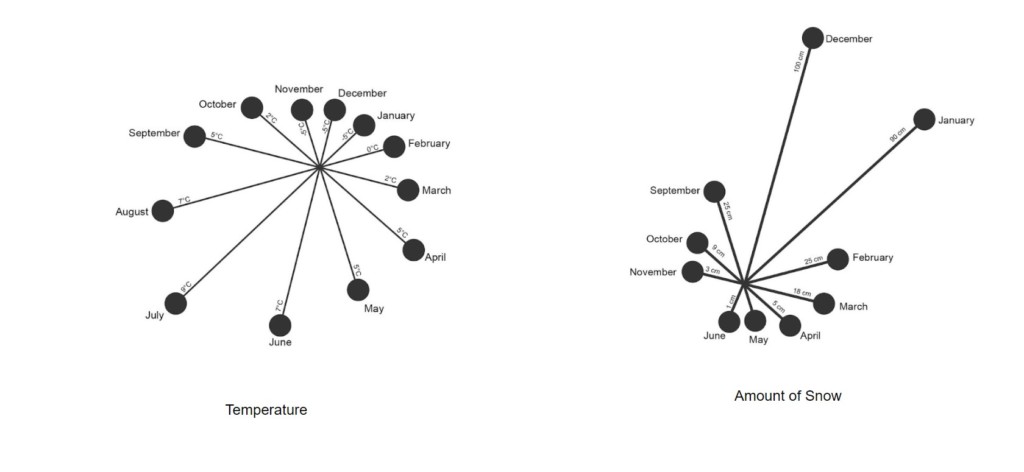
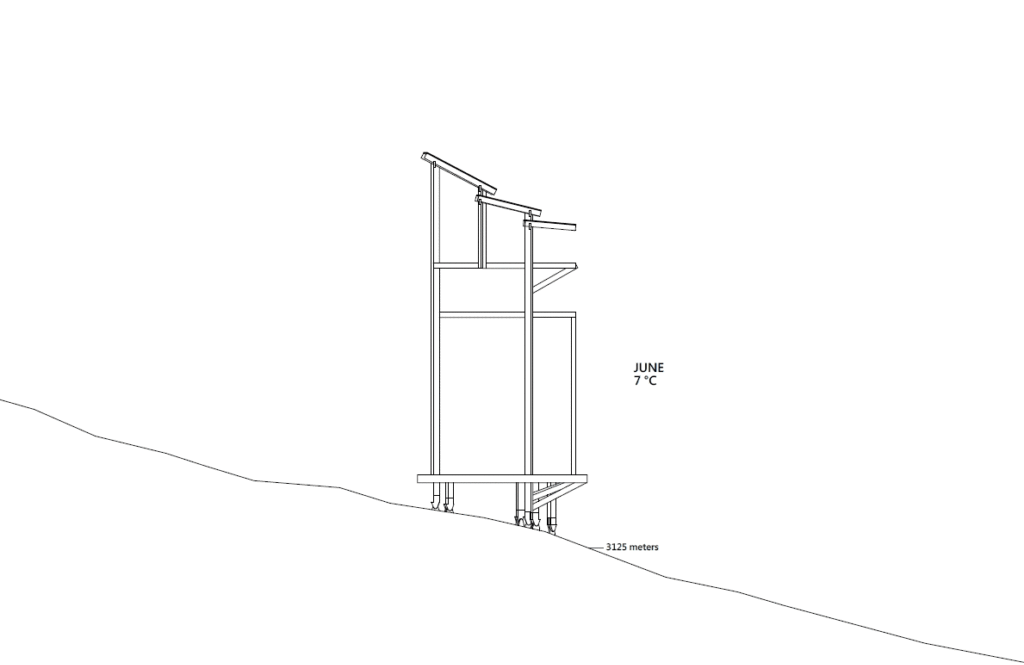
With this in mind, we have chosen to question and experiment the possibilities to design with snow in mind as opposed to trying to avoid its accumulation. To experiment with the volumetric qualities of snow, we used a grater to help us better understand the qualities of accumulation and collection of a light and fluffy substance.
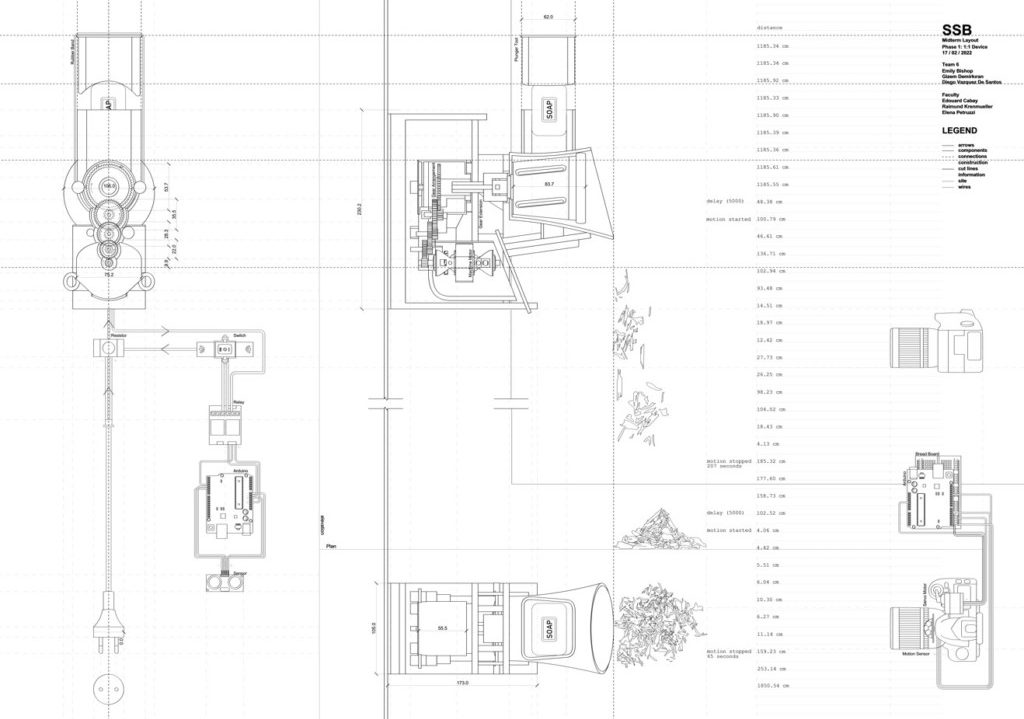
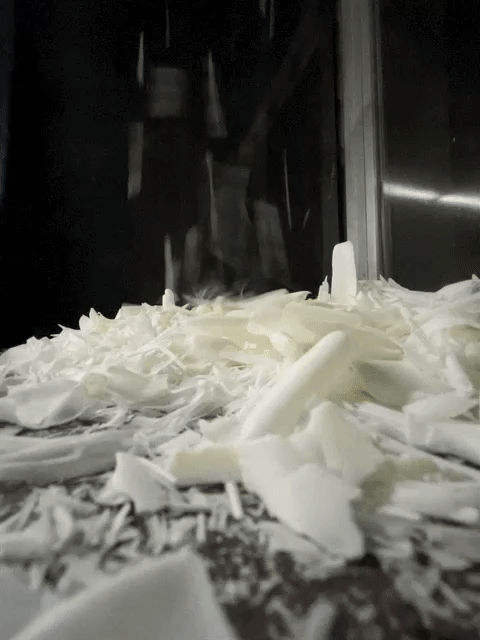
Through these experiments, we were able to learn about the snow’s kinetic friction point on certain roof pitches. With a steep enough roof pitch, the snow would begin to slide as a sort of mini avalanche. From this study we proceeded to exploit this phenomenon.
Snow, when accumulated, begins with a fluffy consistency when fresh, and as time pases it melts and refreezes. This process creates a compact layer of snow, allowing it to stay solid for a longer time as temperature rises.
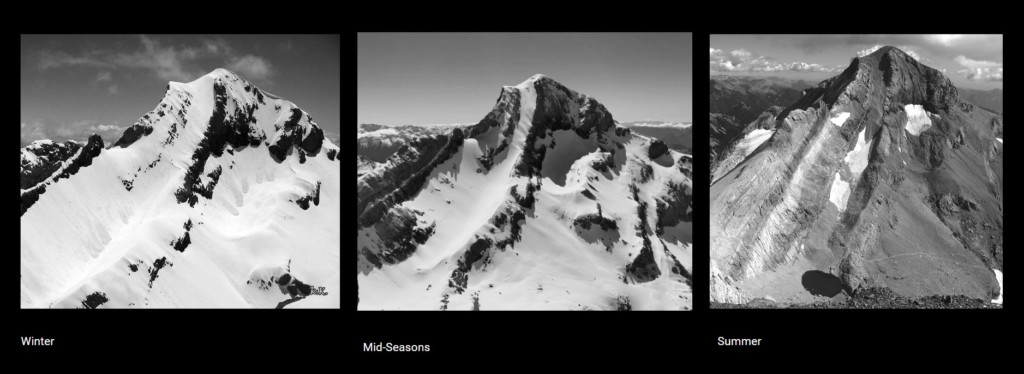
This constant state of melting and freezing throughout the day creates unique conditions as water flows between states of solid and liquid. One gets to experience and watch the phenomenon of the water changing cycles and how the energy of the sun causes the terrain of the mountain to constantly morph and adapt to the weather.
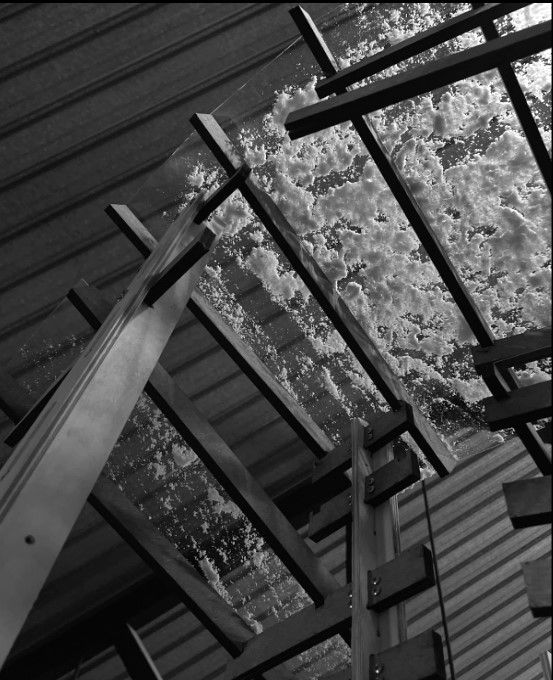 This accumulation of snow will begin to obscure the view of the sun on the roof panels. The darkness will concentrate in the middle of the cabin where the courtyard is located and fan out to the rest of the spaces as snow begins to rest on the higher roof pitches. Each room will still have some filtered light entering through the glass walls that look onto the white snow covered mountain range.
This accumulation of snow will begin to obscure the view of the sun on the roof panels. The darkness will concentrate in the middle of the cabin where the courtyard is located and fan out to the rest of the spaces as snow begins to rest on the higher roof pitches. Each room will still have some filtered light entering through the glass walls that look onto the white snow covered mountain range.
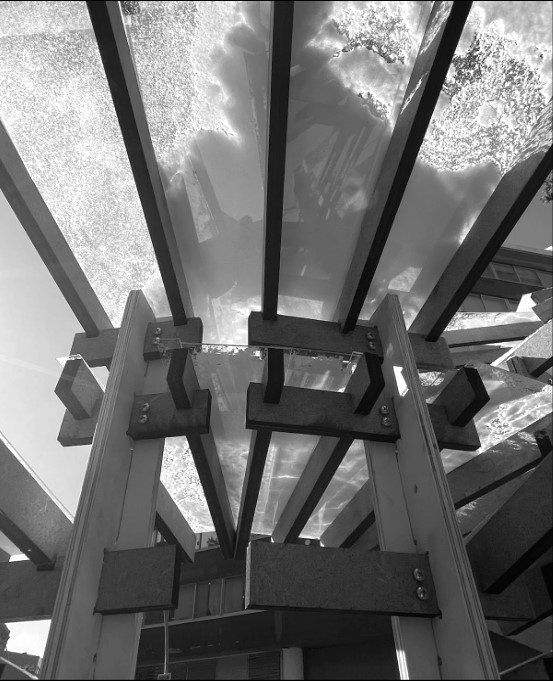
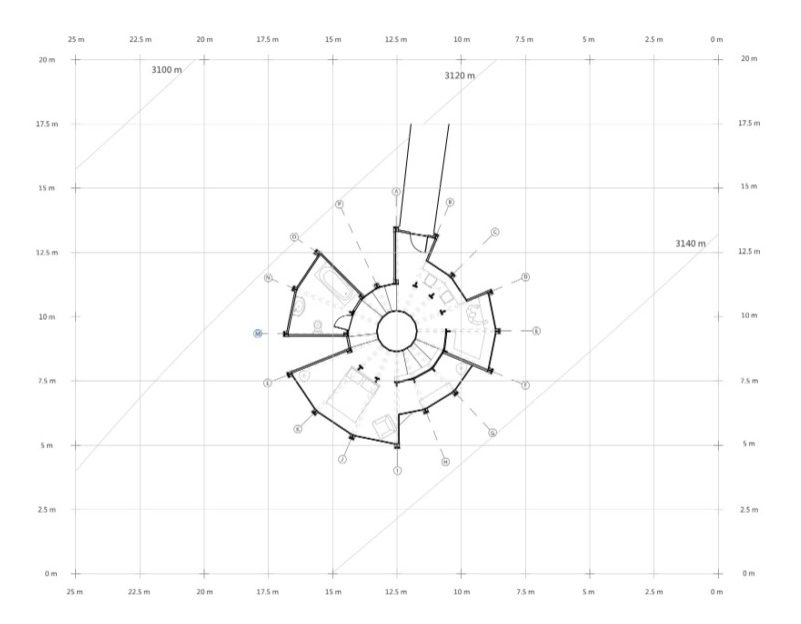
We decided to design a series of glass roofs at three different angles arrayed around the cabin in a circular manner. This design would help cluster our phenomenon in a central courtyard, exaggerating the accumulation of snow, and displaying it to all parts of the cabin.

The glass roofs are elevated above the interior space to allow more light to penetrate into the cabin. This highlights the snow phenomenon by allowing the viewer to get a better view of the snow accumulation and shadow play that it creates inside.
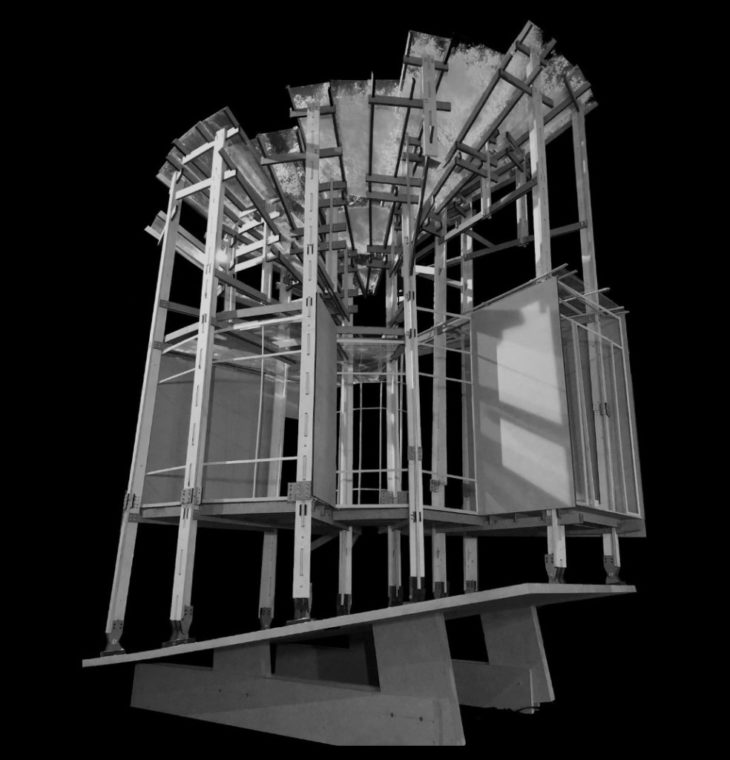
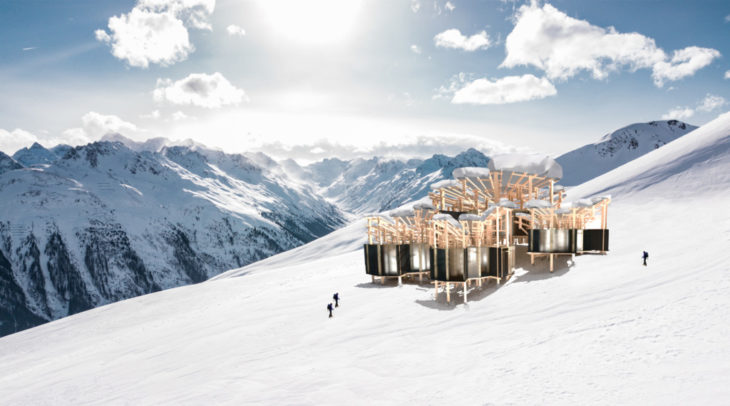
Our building morphed from a single person cabin into a mountain hotel. This building has a constant view of the water cycle and its stages in a daily setting and through a yearly cycle.

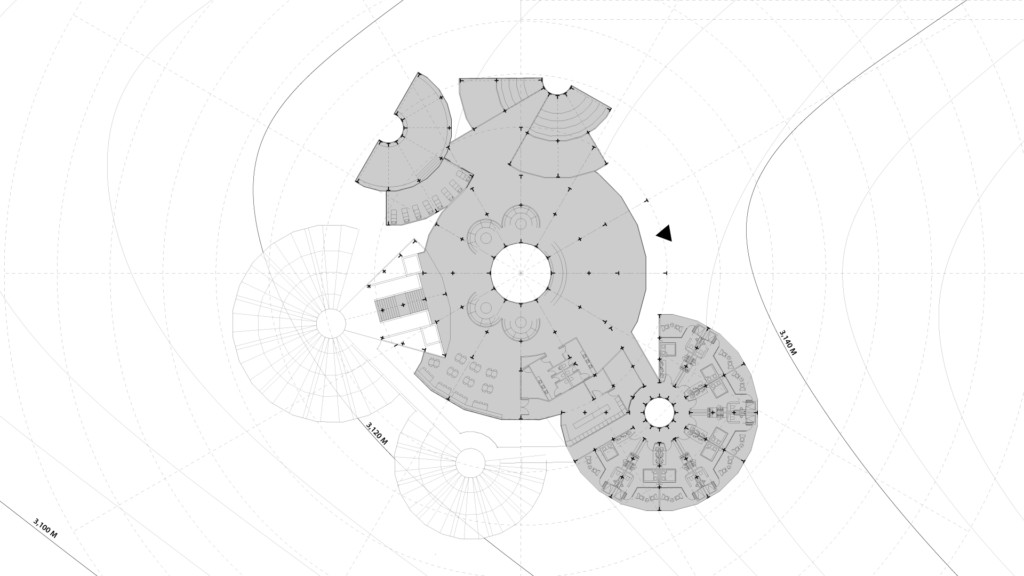
 Ground Floor
Ground Floor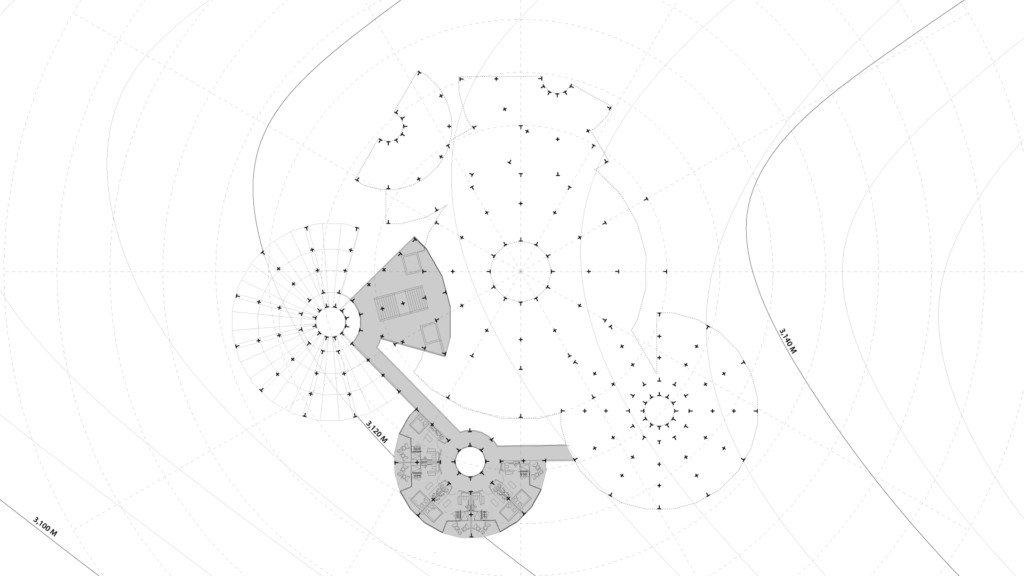
In this hotel, It is split up into multiple different sized circles and half circle structures which are anchored through connected roofs and pathways. The main shared spaces include the lobby, the common room, and the dining room. Social activities occur in these spaces, requiring better lighting conditions. This main circle is placed on the higher elevation for this reason.
-First Floor
The rooms are arranged so that users are able to view the snow from many different perspectives such as the heavy snowfall in the central courtyard, the light and fluffy accumulation on the roofs, and the vast expanse of snow covering the mountain ranges.
– Second Floor
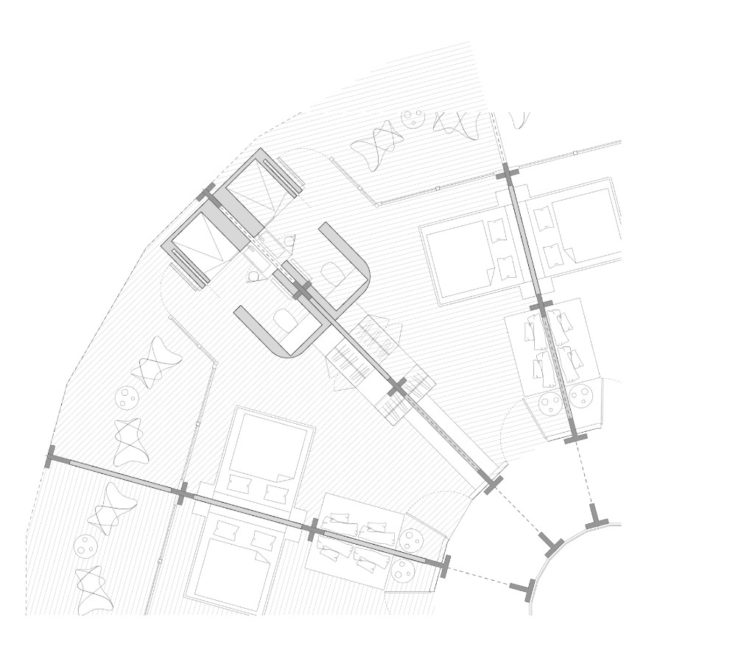
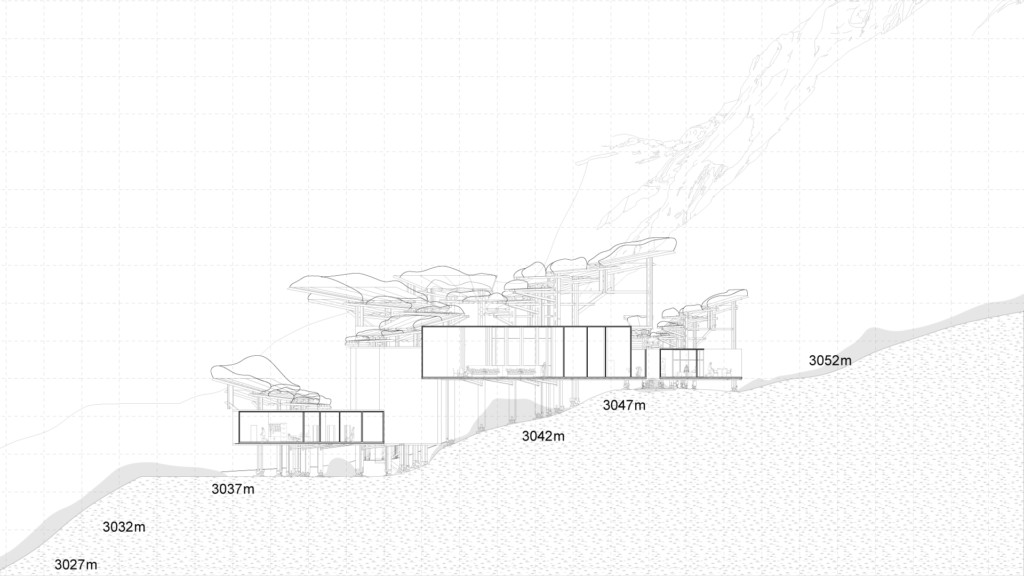
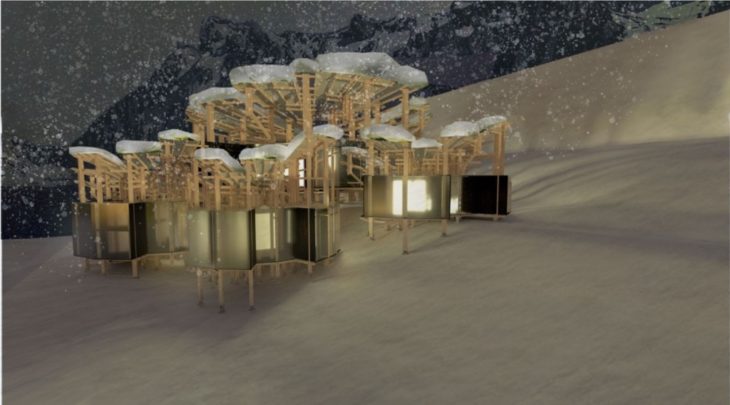

Snow Sanctuary is a project of IAAC, Institute for Advanced Architecture of Catalonia developed at Masters in Advanced Architecture (MAA01), 2021/22 by students: Emily Christine Bishop, Gizem Demirk?ran, and Diego Vazquez de Santos; faculty: Eduoard Cabay, Raimund Krenmueller; student assistant: Elena Petruzzi.